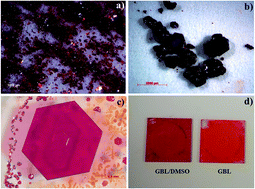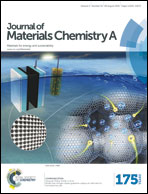Optoelectronic and photovoltaic properties of the air-stable organohalide semiconductor (CH3NH3)3Bi2I9†
Abstract
Lead halide perovskite materials have shown excellent optoelectronic as well as photovoltaic properties. However, the presence of lead and the chemical instability relegate lead halide perovskites to research applications only. Here, we investigate an emerging lead-free and air stable compound (CH3NH3)3Bi2I9 as a non-toxic potential alternative to lead halide perovskites. We have synthesized thin films, powders and millimeter-scale single crystals of (CH3NH3)3Bi2I9 and investigated their structural and optoelectronic properties. We demonstrate that the degree of crystallinity strongly affects the optoelectronic properties of the material, resulting in significantly different band gaps in polycrystalline thin films and single crystals. Surface photovoltage spectroscopy reveals outstanding photocharge generation in the visible (<700 nm) region, while transient absorption spectroscopy and space charge limited current measurements point to a long exciton lifetime and a high carrier mobility, respectively, similar to lead halide perovskites pointing to the remarkable potential of this semiconductor. Photovoltaic devices fabricated using this material yield a low power conversion efficiency (PCE) to date, but the PCE is expected to increase with improvements in thin film processing and device engineering.


 Please wait while we load your content...
Please wait while we load your content...